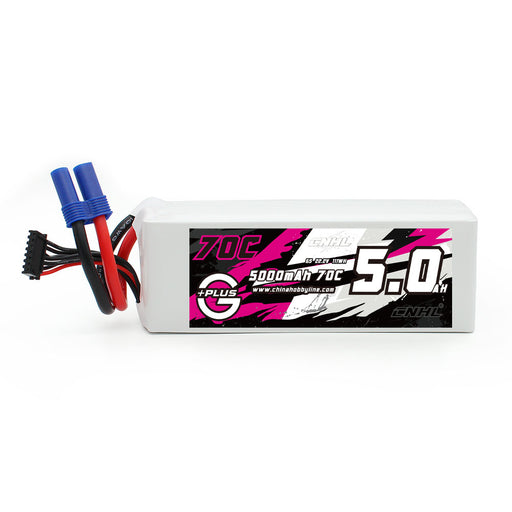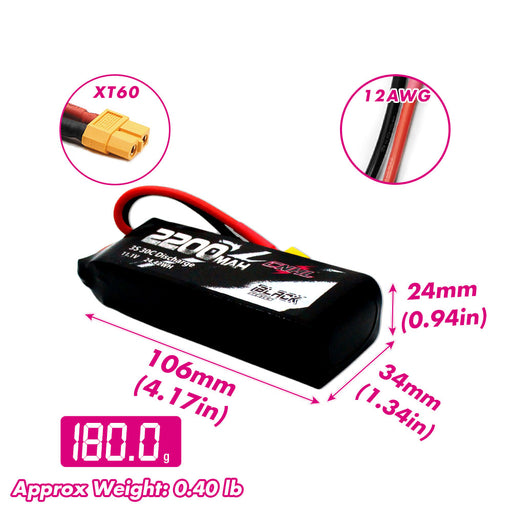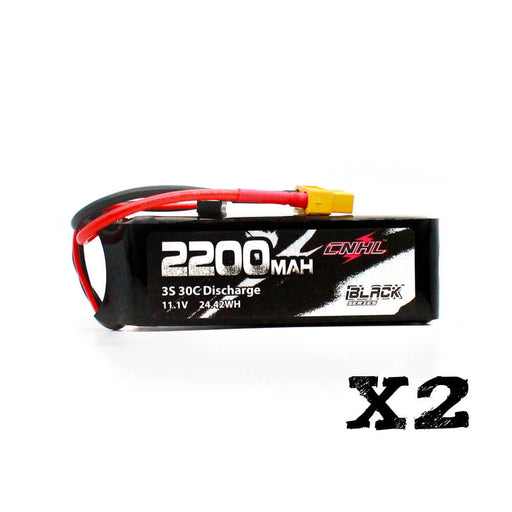
リポバッテリー3sの自己放電に関する重要情報!
リポバッテリー3sの自己放電
リポバッテリー3sが開放回路状態にあるとき、蓄えられた電力が自発的に消費される現象をバッテリーの自己放電と呼び、リポバッテリー3sの保持容量、すなわち特定の環境条件下でのバッテリー蓄電容量の保持能力とも呼ばれます。
理論的には、リポバッテリー3sの電極は充電状態下で熱力学的に不安定な状態にあり、リポバッテリー3sは自発的に物理的または化学的反応を起こし、リポバッテリー3sの化学エネルギーの損失を引き起こします。
リポバッテリー3sの自己放電は、バッテリー性能を測る重要なパラメーターの一つでもあります。異なる種類のバッテリーで同じ自己放電係数とサイズの場合、リポバッテリー3sの自己放電率は鉛蓄電池よりやや優れており、ニッケル水素電池よりも大幅に優れています。
リポバッテリー3sの自己放電の種類
自己放電は、反応の種類に応じて物理的自己放電と化学的自己放電に分けられます。
一般的に、物理的な自己放電によるエネルギー損失は回復可能ですが、化学的な自己放電によるエネルギー損失は基本的に不可逆的です。
物理的自己放電
物理的要因によって引き起こされるリポバッテリー3sの自己放電。この時、電池内部の一部の電荷が負極から正極に到達し、正極材料と還元反応を起こす。
原理は従来の放電とは異なる。通常のリポバッテリー3s放電中は電子の経路は外部回路であり速度は非常に速いが、自己放電中は電子の経路は電解質であり速度は非常に遅い。
物理的自己放電は温度の影響をあまり受けない。連続した物理的自己放電はリポバッテリー3sの開放電圧をゼロにすることがあるが、それによるエネルギー損失は一般的に回復可能である。
物理的自己放電の原因は一般的に物理的な微小短絡である。リポバッテリー3sのセパレーターが何らかの要因で損傷すると、物理的な微小短絡が発生する。主に以下の形態がある:
1. コレクターのバリ;
2. セパレーター表面に大きな粒子のほこりがある;
3. 正極/負極シートに残留する金属不純物。
化学的自己放電
電池内部の自発的な化学反応によって引き起こされる電圧降下と容量劣化。化学的自己放電が発生すると、正極と負極の間に電流は形成されないが、リポバッテリー3sの正極と負極および電解質間で一連の複雑な化学反応が起こり、正極の消耗と電池の出力低下をもたらす。
さらに、リポバッテリー3s内部の自己放電プロセスは複雑であり、2種類の自己放電が同時に進行する可能性がある。化学反応は温度の影響を大きく受ける。加えて、化学的自己放電は物理的自己放電のように充電の枯渇を引き起こさない。
リポバッテリー3sでは、化学的副反応が電解質中のリチウムイオンを消費し、挿入/抽出されるリチウムイオンの数が減少し、それによりリポバッテリー3sの容量が減少する。化学的副反応と電極の消耗はどちらも不可逆的である。
自己放電は正極、負極、電解質の観点から分析される:
1. 正極:正極/電解質界面での副反応および正極中の遷移金属イオンの溶解;
2. 負極:負極/電解質界面での副反応および電子-イオン-電解質複合体の形成;
3. 電解質:電解質中の電極材料の溶解;電解質や不純物による負極表面の腐食;電解質によって分解された不溶性固体やガスが電極を覆い、不動態層を形成するなど。
リポバッテリー3sの自己放電に影響を与える要因
周囲温度
周囲温度はリポバッテリー3sの自己放電に大きな影響を与えます。研究によると、リチウムコバルト酸化物電池(LCO)は周囲温度が高いほど容量劣化が速くなります。
高温では、電池の自己放電の悪化が見られます。
以下の理由にまとめられます:
1. SEI層の安定性が悪化し破損し、SEIの再生によりより多くのリチウムが消費される。
2. 高温により正極金属の溶解速度が加速する。
3. 電子がより活発になり、負極/電解質の副反応に参加しやすくなる。
4. 電解質の活性が高まり、電解質と電極間の副反応が強まる。
環境湿度
研究によると、湿度が高い環境(相対湿度90%以上)では、防湿タブのないリポバッテリー3sの自己放電損失が防湿タブ付きの電池よりも深刻です。研究者は、湿潤環境で水分子の極性がリポバッテリー3sの負極の電子をタブへ移動させ、電位バランスを保つために負極のLi+も同時に負極/電解質界面へ移動すると推測しています。これにより電子-イオン-電解質複合体が形成されやすくなり、可逆的自己放電が加速されるか、追加のSEI層が形成され金属析出を引き起こし、不可逆的自己放電損失が増加します。
リポバッテリー3sの充電状態(SOC)
研究によると、同じ温度条件下でリポバッテリー3sの高SOC状態では容量の劣化がより速く進行します。これは高SOC状態で負極がリチウム豊富状態にあり、電子-イオン-電解質複合体が形成されやすくなり、電池の可逆的自己放電が強まるためです。
また、リチウム鉄リン酸塩(LFP)電池において、60℃で100% SOCの電池の容量劣化率が65% SOCの電池よりも小さいことを示す研究もあります。これは、LFPの負極が約70% SOCで二相遷移状態にあるためと推測されており、高SOC部分と低SOC部分の劣化法則が一致しないことを意味しています。
いわゆるリポバッテリー3sの自己放電とは、リポバッテリー3sが開放回路状態にあるときに蓄えられた電力が自発的に消費される現象のことです。リポバッテリー3sの自己放電は主に物理的自己放電と化学的自己放電を含み、要因には温度、湿度、充電状態が含まれます。
上記は、Die Flashがお届けするリポバッテリー3sの自己放電に関する全内容です。皆様のお役に立てれば幸いです。さらなる情報は継続的に更新されます。次号でお会いしましょう。

ベストセラー
-
元の価格 $65.99元の価格 $65.99 - 元の価格 $65.99元の価格 $65.99$56.99 USD - $65.99 USD$56.99 - $65.99現在の価格 $56.99 USD
CNHL G+Plus 5000mAh 22.2V 6S リポバッテリー 70C EC5プラグ付き
在庫に10以上あります仕様: ストック番号: 500706EC5 容量: 5000mAh 電圧: 22.2V / 6セル / 6S1P 放電率: 70C 継続 / 140C バースト 充電率: 最大5C サイズ(1-5mmの誤差): 49X51X149mm(高さ*幅*長さ) おおよその重量(±5g) : 71...
詳細をすべて表示元の価格 $65.99元の価格 $65.99 - 元の価格 $65.99元の価格 $65.99$56.99 USD - $65.99 USD$56.99 - $65.99現在の価格 $56.99 USD最大14%節約 -
元の価格 $38.99元の価格 $38.99 - 元の価格 $38.99元の価格 $38.99$33.99 USD - $38.99 USD$33.99 - $38.99現在の価格 $33.99 USD
CNHL スピーディーピザシリーズ プロ 1350mAh 22.2V 6S 150C リポバッテリー XT60プラグ付き
残り2台のみ仕様: 在庫番号: 1351506PZ 容量:1350mAh 電圧:22.2V / 6セル / 6S1P 放電率:連続150C / バースト300C 充電率:最大5C サイズ(1-5mmの差異あり):38X38X78mm おおよその重量(±5g):215g 出力コネクター:XT60 バラン...
詳細をすべて表示元の価格 $38.99元の価格 $38.99 - 元の価格 $38.99元の価格 $38.99$33.99 USD - $38.99 USD$33.99 - $38.99現在の価格 $33.99 USD最大13%節約 -
元の価格 $51.98元の価格 $51.98 - 元の価格 $51.98元の価格 $51.98$45.98 USD - $51.98 USD$45.98 - $51.98現在の価格 $45.98 USD
2パック CNHL ブラックシリーズ V2.0 1300mAh 22.2V 6S 130C リポバッテリー XT60プラグ付き
在庫に10以上あります仕様 在庫番号: 1301306BK 容量: 1300mAh 電圧: 22.2V / 6セル / 6S1P 放電率: 130C 継続 / 260C バースト 充電率: 最大5C サイズ(1-5mmの差異あり): 48X33X77mm 重量(±5g): 210g 出力コネクター: XT60 バ...
詳細をすべて表示元の価格 $51.98元の価格 $51.98 - 元の価格 $51.98元の価格 $51.98$45.98 USD - $51.98 USD$45.98 - $51.98現在の価格 $45.98 USD最大12%節約 -
元の価格 $43.98元の価格 $43.98 - 元の価格 $43.98元の価格 $43.98$33.98 USD - $43.98 USD$33.98 - $43.98現在の価格 $33.98 USD
[Combo] 2パック CNHL MiniStar 1500mAh 14.8V 4S リポバッテリー 120C XT60プラグ付き
在庫に10以上あります仕様: 在庫番号:1501204 容量:1500mAh 電圧:14.8V / 4セル / 4S1P 放電率:連続120C / バースト240C 充電率:最大5C サイズ(1-5mmの差異):37X33X76mm おおよその重量(±5g):169g 出力コネクター:XT60 バランスコネクター...
詳細をすべて表示元の価格 $43.98元の価格 $43.98 - 元の価格 $43.98元の価格 $43.98$33.98 USD - $43.98 USD$33.98 - $43.98現在の価格 $33.98 USD最大23%節約 -
元の価格 $23.98 - 元の価格 $37.98元の価格 $23.98 - 元の価格 $37.98元の価格 $23.98$19.98 USD - $37.98 USD$19.98 - $37.98現在の価格 $19.98 USD
2パック CNHL ブラックシリーズ 2200mAh 3S 11.1V 30C リポバッテリー XT60プラグ付き
在庫に10以上あります仕様: 在庫番号:220303BK 容量:2200mAh 電圧:11.1V / 3セル / 3S1P 放電率:30C連続 / 60Cバースト 充電率:最大5C サイズ(1-5mmの誤差あり):24X34X106mm おおよその重量(±5g):180g 出力コネクター:XT60 バランスコネク...
詳細をすべて表示元の価格 $23.98 - 元の価格 $37.98元の価格 $23.98 - 元の価格 $37.98元の価格 $23.98$19.98 USD - $37.98 USD$19.98 - $37.98現在の価格 $19.98 USD最大17%節約
新しいアイテム
-
元の価格 $225.00 - 元の価格 $225.00元の価格 $225.00$225.00 USD$225.00 - $225.00現在の価格 $225.00 USD
CNHL Havok 1000mm 高速 4S スポーツレーサー RC 飛行機 PNP(高視認性イエロー/レッドエディション)
残り9台のみCNHL Havok 1000mm 4Sスポーツレーサープレーン – 実績ある1m Havok機体をベースに CNHL Havok 1000mm 4SスポーツレーサーRCプレーンPNPは、日常の実用性を犠牲にせずアドレナリンを求めるパイロット向けの1メートルフォームスピードプレーンです。...
詳細をすべて表示元の価格 $225.00 - 元の価格 $225.00元の価格 $225.00$225.00 USD$225.00 - $225.00現在の価格 $225.00 USD -
元の価格 $120.00 - 元の価格 $120.00元の価格 $120.00$120.00 USD$120.00 - $120.00現在の価格 $120.00 USD
MNRC MN300 RTR 1/12スケール 4WD RC ロッククローラー オフロードトラック 2速トランスミッション付き
残り9台のみMNRC MN300は1/12スケールのレディトゥラン(RTR)4WD RCロッククローラーで、軽いクローリング、トレイル走行、日常のオフロードの楽しみのために作られています。電子機器が組み込まれた状態で組み立て済みで、7.4VバッテリーとUSB充電ケーブルが箱に同梱されています。「全か無...
詳細をすべて表示元の価格 $120.00 - 元の価格 $120.00元の価格 $120.00$120.00 USD$120.00 - $120.00現在の価格 $120.00 USD -
元の価格 $119.99 - 元の価格 $119.99元の価格 $119.99$119.99 USD$119.99 - $119.99現在の価格 $119.99 USD
VOLANTEX スピットファイア RC 飛行機 4チャンネル 6軸ジャイロ安定化機能付き すぐに飛ばせる
残り9台のみ第二次世界大戦の伝説的な英国戦闘機に触発されたVOLANTEX スピットファイア RCプレーンは、クラシックな戦闘機の外観と初心者に優しい最新の飛行制御を融合しています。VOLANTEXの実績ある400mmプラットフォームを基に構築され、このすぐに飛ばせるRC飛行機はXPILOT安定化...
詳細をすべて表示元の価格 $119.99 - 元の価格 $119.99元の価格 $119.99$119.99 USD$119.99 - $119.99現在の価格 $119.99 USD -
元の価格 $122.99 - 元の価格 $122.99元の価格 $122.99$122.99 USD$122.99 - $122.99現在の価格 $122.99 USD
VOLANTEX BF109 RC 飛行機 4チャンネル RTF – ジャイロ&XPilot搭載 第二次世界大戦戦闘機
残り9台のみVOLANTEX BF109 4チャンネル RCプレーン RTFは、最も象徴的な第二次世界大戦の戦闘機の一つを、コンパクトで初心者に優しいパッケージにまとめました。400mmの翼幅、軽量なEPPフォーム製の機体、そしてXPilotジャイロシステムを備えたこの戦闘機は、新しいパイロットに滑...
詳細をすべて表示元の価格 $122.99 - 元の価格 $122.99元の価格 $122.99$122.99 USD$122.99 - $122.99現在の価格 $122.99 USD -
元の価格 $117.99 - 元の価格 $117.99元の価格 $117.99$117.99 USD$117.99 - $117.99現在の価格 $117.99 USD
Volantex RC プレーン P51D V2 400mm RTF – 初心者向けXPilotスタビライザー付き4CHウォーバード
残り9台のみVolantex RC Plane P51D V2 RTFは、学習をできるだけリラックスして行えるように設計されたコンパクトな第二次世界大戦スタイルの戦闘機です。400mmの翼幅、EPPフォーム構造、XPilot 6軸スタビライザーを備え、このVolantex RC飛行機は初心者に滑らかな...
詳細をすべて表示元の価格 $117.99 - 元の価格 $117.99元の価格 $117.99$117.99 USD$117.99 - $117.99現在の価格 $117.99 USD





















コメントを残す